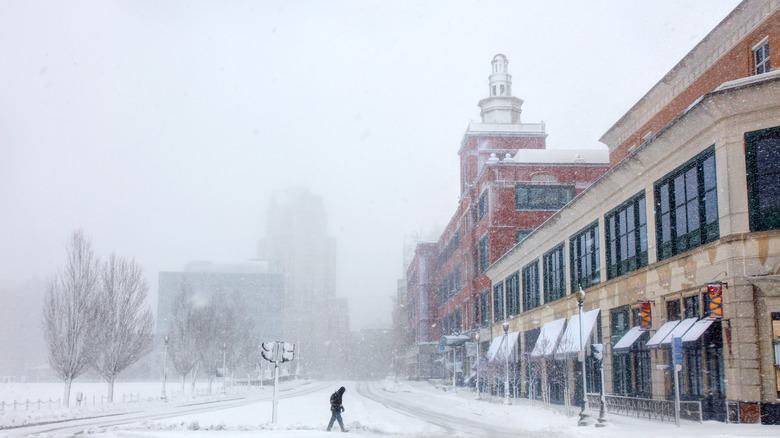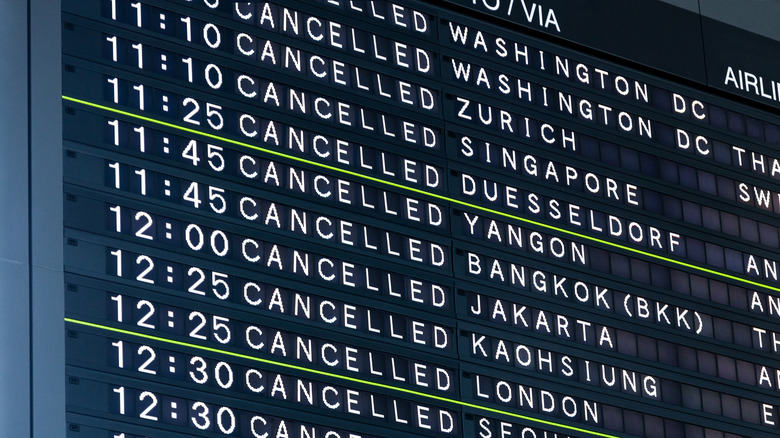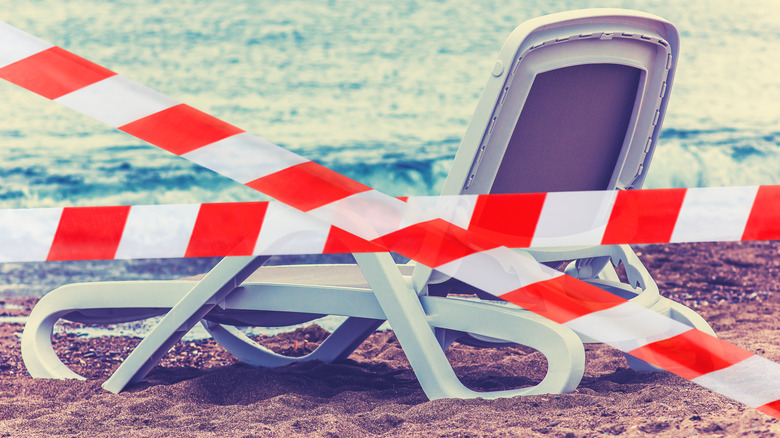What Is A Nor'easter, And How Does This Deadly Phenomenon Affect Travelers?
As temperatures begin to change and storm systems sweep across America, a familiar yet formidable phrase begins to resurface in weather reports across the U.S. Northeast: a nor'easter is coming. While the name sounds like how an Australian might exclaim their disdain for Easter, the powerful storms associated with it are anything but amusing.
Each year, nor'easter storms bring a mix of heavy snow, rain, wind, coastal flooding, and travel disruptions that can rival the impact of hurricanes. These storms are large, cyclonic systems that typically form along the east coast, most often between late fall and early spring. Unfortunately, the temperatures there are the perfect cocktail for a deadly storm.
According to the National Weather Service, the difference in temperature between the warm air over the Gulf of Mexico (Gulf of America) and the Atlantic collides with cold air from the Arctic, creating a volatile mix that fuels snow, rain, and wind. The result? A massive weather event that can dump feet of snow across cities like Washington D.C., Boston, New York, and Philadelphia, while lashing coastal areas with storm surges, rain, and high tides. Some of the most infamous winter storms in U.S. history, like the Blizzard of 1888, the March 1993 "Superstorm", or the Boston snowstorms of January and February 2015, have sadly shown just how destructive these storm surges can be.
How Nor'easter storms affect travel
For travelers, the effects of nor'easter storms, or any storms for that matter, can be a logistical nightmare. While most forms of travel can see cancellations across the board, those traveling via air are most likely to be affected. During the most recent storm ravaging northeastern states, airlines such as American, Delta, JetBlue, Southwest, Spirit, and United have all reported disruptions across major airport hubs. In New Jersey, the Royal Caribbean's Symphony of the Seas has been docked at Cape Liberty in Bayonne due to high winds and increasingly large waves. Road travel can also become treacherous in a matter of hours, as whiteout conditions and slippery surfaces make driving dangerous. Rail travel, as well, unfortunately, isn't spared.
Amtrak routes between Washington, D.C., and Boston, one of the busiest passenger rail corridors in the country, have seen severe service interruptions due to snow accumulation, severe temperatures, and downed power lines. For those already on the move, hotel availability can become limited, as stranded passengers seek last-minute accommodations.
Beyond the immediate concerning disruptions within the travel industry, nor'easters are also a cause of ripple effects. Winter tourism destinations, everything from ski resorts in Vermont to coastal inns in Maine, can experience both booms and busts depending on the storm's path. While heavy amounts of snow can and will attract avid skiers, flooding and power outages often force closures and cancellations in these popular vacation spots.
Staying safe and flexible
For anyone with travel plans to the northeast between November and March, keeping an eye on the forecast and weather reports is essential. The National Weather Service and local meteorologists track a storm's progression days in advance, allowing travelers who are able to change their plans accordingly. Consider signing up for airline and weather alerts, booking flexible fares, grabbing travel insurance, reviewing the cancellation policies for your flight and accommodations beforehand, and having contingency plans for accommodations and ground transportation.
If caught in the middle of a natural disaster on your vacation, safety should always be at the forefront. Experts recommend avoiding unnecessary travel, stocking up on essentials, and staying indoors until local authorities give the all-clear. Consider purchasing a safety supply kit (or items to make your own) from the local grocery store, and include essentials you may need in case you're stuck without power or unable to leave your hotel room during the storm.
While these fierce winter storms are just a part of life in the northeast, not every traveler is used to this type of weather, so understanding these storm systems and how they impact travel can make all the difference. For travelers willing to plan and stay flexible, even a nor'easter doesn't have to ruin your vacation — it just adds one more story to the docket.


